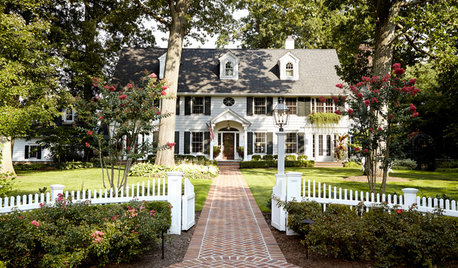Question about very old Aspidistra
seedling88
15 years ago
Featured Answer
Sort by:Oldest
Comments (19)
maidinmontana
15 years agojeannie7
15 years agoRelated Professionals
Glendora Landscape Architects & Landscape Designers · Vernon Hills Landscape Architects & Landscape Designers · Zion Landscape Architects & Landscape Designers · Newcastle Landscape Architects & Landscape Designers · Jackson Landscape Contractors · Stamford Landscape Contractors · Stoughton Landscape Contractors · Kerman Landscape Contractors · Live Oak Landscape Contractors · Panama City Beach Landscape Contractors · Pikesville Landscape Contractors · View Park-Windsor Hills Landscape Contractors · Wethersfield Landscape Contractors · Clinton Township Interior Designers & Decorators · Cusseta Interior Designers & Decoratorsmr_subjunctive
15 years agopirate_girl
13 years agochristi1996
13 years agoharris_jamal
13 years agodalar_ca
13 years agomartinfromkensington
13 years agopirate_girl
13 years agomartinfromkensington
13 years agocazzastorey_hotmail_co_uk
13 years agotapla (mid-Michigan, USDA z5b-6a)
13 years agoCDevine
11 years agoTiffany, purpleinopp Z8b Opp, AL
11 years agospencerb9
9 years agopelargonium_gw
9 years agospencerb9
9 years agotapla (mid-Michigan, USDA z5b-6a)
9 years ago
Related Stories

REMODELING GUIDESConsidering a Fixer-Upper? 15 Questions to Ask First
Learn about the hidden costs and treasures of older homes to avoid budget surprises and accidentally tossing valuable features
Full Story
ORGANIZINGPre-Storage Checklist: 10 Questions to Ask Yourself Before You Store
Wait, stop. Do you really need to keep that item you’re about to put into storage?
Full Story
MOST POPULAR8 Questions to Ask Yourself Before Meeting With Your Designer
Thinking in advance about how you use your space will get your first design consultation off to its best start
Full Story
GREEN BUILDINGConsidering Concrete Floors? 3 Green-Minded Questions to Ask
Learn what’s in your concrete and about sustainability to make a healthy choice for your home and the earth
Full Story
EXTERIORSCurb Appeal Feeling a Little Off? Some Questions to Consider
Color, scale, proportion, trim ... 14 things to think about if your exterior is bugging you
Full Story
WORKING WITH PROS10 Questions to Ask Potential Contractors
Ensure the right fit by interviewing general contractors about topics that go beyond the basics
Full Story
REMODELING GUIDES9 Hard Questions to Ask When Shopping for Stone
Learn all about stone sizes, cracks, color issues and more so problems don't chip away at your design happiness later
Full Story
ARCHITECTURE10 Things to Know About Prefab Homes
Are prefab homes less costly, faster to build and greener than homes constructed onsite? Here are answers to those questions and more
Full Story
DECORATING GUIDESHouzz Tour: Much to Like About This Traditional Beauty
New elements mix well with old in a New Jersey family’s elegant and comfortable colonial revival home
Full Story
REMODELING GUIDESPlanning a Kitchen Remodel? Start With These 5 Questions
Before you consider aesthetics, make sure your new kitchen will work for your cooking and entertaining style
Full Story








bluelake